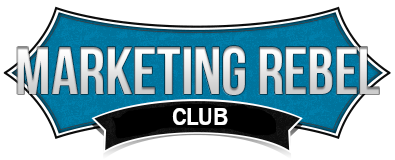How to Use Email Marketing to Grow Your Business
 Stan Dahl, Brian Johnson and Jason Henderson discuss best practices and current trends in email marketing.
Stan Dahl, Brian Johnson and Jason Henderson discuss best practices and current trends in email marketing.
Topics include how to segment your list and how to speak with each segment.
This presentation is from the Action Seminar and it, plus a vast library of small business marketing lessons and training programs...
...plus a private Facebook-like chat stream where you can get answers to all of your
questions about marketing tools and techniques, small business growth, and life as an entrepreneur...
... is only available to members of the
Marketing Rebel Insiders Club.
You can access all of this immediately for less than $1 per day.
You will receive full access and all of the privileges of membership...
... so you can learn for yourself why our members love this online club so much...
... and why they don't invest in marketing tools or strategies without first checking in with The Club.
Click Here to start your membership today.
We'll see you on the inside...
Stan Dahl & The Marketing Rebel Team
